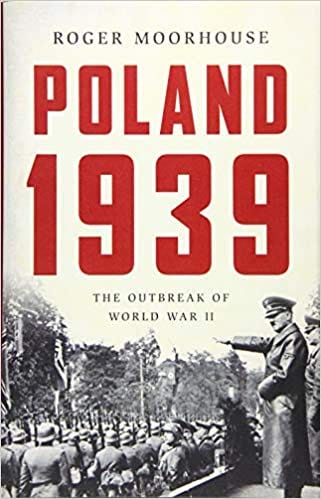The full horror of modern warfare, in which defenceless civilians are deliberately targeted by the full range of industrialized killing power – from high-flying bombers, to rockets and artillery of the sort we are seeing so tragically in Ukraine – was brilliantly captured by the American journalist Julien Bryan in Warsaw between September 7 and 21, 1939. Bryan’s films and photographs provided the world with a shocking window into the horror of the militarization of hatred unleashed by the Wehrmacht against hapless Poland and serving as the curtain-opener for a world war that would eventually see up to 85-million people lose their lives. A series of photographs of one terrible incident on September 13 captured the shock and incredulity on the face of a Polish girl, 12-year-old Kaimiera Mika, as she stood over the newly slaughtered body of her elder sister, Anna. Innocently picking potatoes in a field outside the capital with six others, the girl and one other had been struck down by marauding Luftwaffe fighters. It was as if the pilots had been deliberately looking for defenceless civilians to kill, their aim clearly to sow terror.
Kaimiera’s incredulous expression captures the agony of sudden, unexpected and bloody bereavement. The Mika girls were innocents caught up in a war foisted on the world by Germany’s aggressive, racist fanaticism, an ideological disease artfully combined by the Nazis with the concept of Grosse Deutschland – the notion that Germany’s borders were defined not by geography but by blood – and fatally combined with the pacific imbecility of the Western democracies, unable to comprehend the evil that lay at the heart of both fascist and communist polity in the 1930s. In Kaimiera’s face is captured the visceral inhumanity of a new type of warfare, in which the twin aim was the eradication of some races and the enslavement of others. So much of what the world saw in 1939 is being repeated by another nationalistic ideologue - Vladimir Putin - in eastern Ukraine today.
It wasn’t as if the world was unaware of the prospect of ruinous war brought about by German polity under Hitler: Europe, and the world, had been talking about little else since 1933, debating whether the aggressive racial nationalism of the Nazi Party augured good or evil for European peace and stability. As I have demonstrated in Under A Darkening Sky (published in the U.K. as The Rise of the Third Reich) only a few – a brave few, mainly Americans – reported from within what Erik Larson describes as The Garden of Beasts to forewarn of war.
Bryan had been travelling on holiday in Rumania when the Germans attacked on September 1, 1939. Six days later he made his way into Warsaw, a city of 1.3 million inhabitants facing the brunt of air and, before long, artillery attacks, arriving in the pre-dawn darkness of a city under siege. “I arrived” he later wrote, “to find that not only the Polish Government had fled the city, but all the foreign correspondents as well. For two weeks, I photographed the citizens of Warsaw as they fought with heroism but futility against a powerful enemy. It was a new kind of war in which civilians, not the military, were the prime targets.” Bryan immediately recognized the uniqueness of what he could see all around him: buildings with their innards scooped out by explosions, their inhabitants killed or made homeless, pathetically wheeling their push-chairs and barrows containing all that remained of their possessions, in search of safety. This was a war deliberately waged by a totalitarian state against the innocent. Writing in 1940, long before such horrors became commonplace, he noted that “I was in a city about to face perhaps the worst siege of all modern history.” He knew instinctively that his task, as the only remaining foreign journalist in the city, was to make a record of what he could see, and show the world what lebensraum really meant: the ejection by violence on racial grounds of an undeserving and inferior tribe by a racially pure master race. “I was not,” he asserted, “making a travelogue.” For two weeks, accompanied by a Polish translator, Stephan Radlinski, he walked the streets with a still and a cine camera, capturing in a series of unforgettable images, the human tragedy of a war targeted at civilians. There were no pictures in those he took of soldiers on the battlefield. Instead, they were of children, like Kaimiera Mika, standing shocked over the lifeless bodies of their sisters, mothers, friends.
Thanks to Bryan’s courage, those shocking images of murder serve as permanent reminders of the deliberate brutality that was the hallmark of this most terrible of wars.
A fabulous introduction to the tragedy of Poland is my friend Roger Moorhouse’s Poland 1939, which tells this story as eloquently as anything I have ever read.







I knew the photographs but not this detail. Roger’s book (called First to Fight in the UK I believe) will dispel all those myths about the Polish military. Required reading. It is extraordinary how the Luftwaffe gets a pass, often from Americans.
I must say that as much as I love history and I know how much brutality it contains, these photos were just somehow too much. Together with what Europe is facing nowadays. I put wine into the fridge, just to comfort me after reading this. Well, that is a sign that you did a great job!